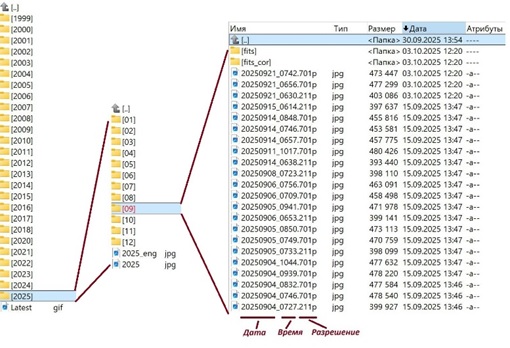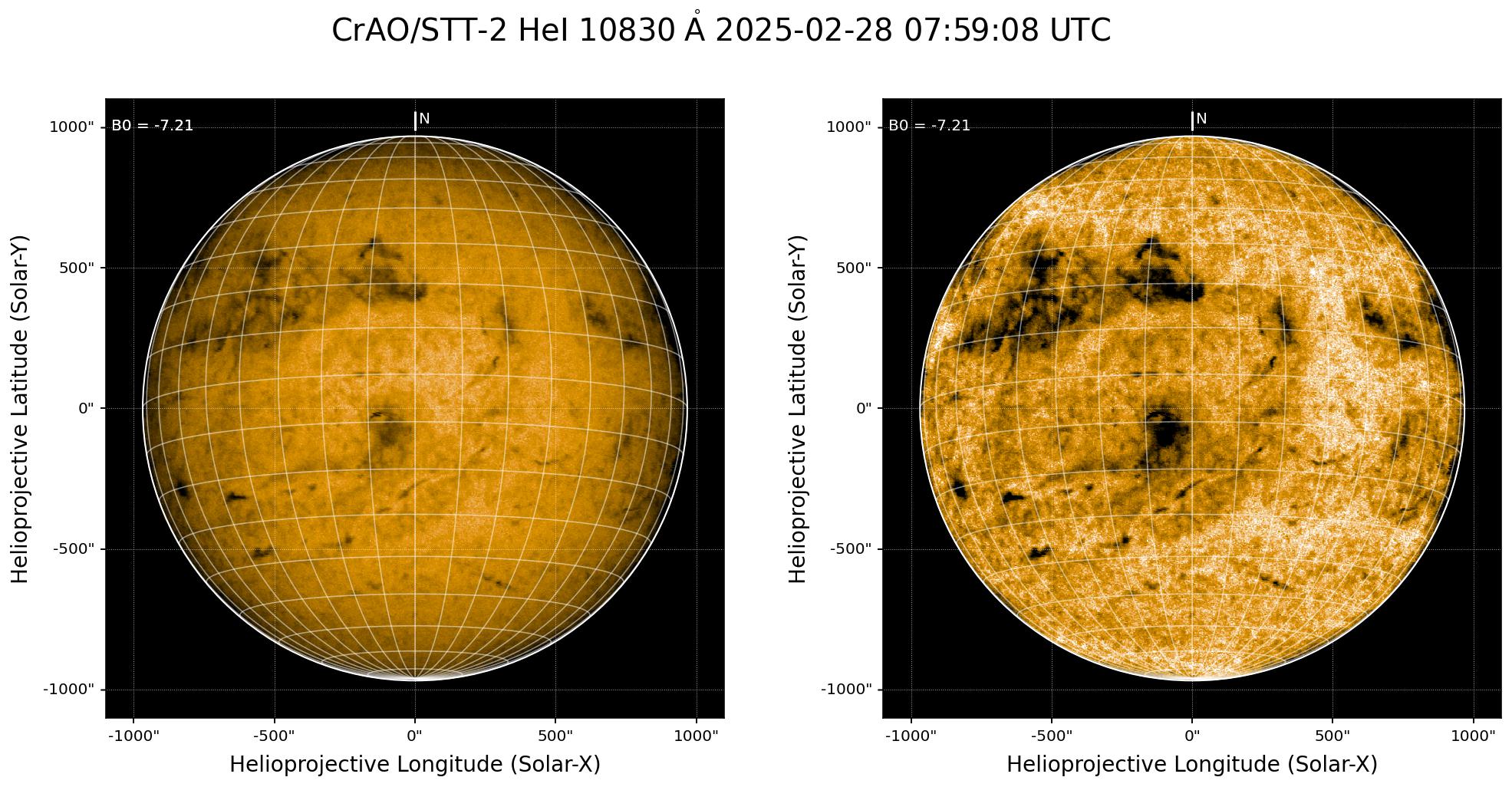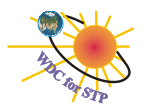|
|
|
Database of the Sun observations in the He I 10830 Å line
obtained with the STT-2 telescope at the Crimean Astrophysical Observatory
DOI: 10.2205/ESDB-SAD-CrAO
At the Crimean Astrophysical Observatory of the Russian Academy of Sciences (CrAO),
the STT-2 telescope has accumulated unique observational data
in the He I 10830 Å (He I) line, allowing us to analyze the evolution of coronal holes, filaments, and active regions
over more than two solar cycles (1999–2025). Regular observations in the He I line at CrAO have been conducted using
the STT-2 telescope with a diffraction spectrograph and a universal spectrophotometer from 1999 to the present.
During the periods of modernization (almost the entire year 2010 and from the second half of 2018 to the beginning of 2020),
observations were not carried out. Over the entire period, over 4,500 maps of the full solar disk
in the He I line were obtained (Fig. 1).

Figure 1
Since the observation process underwent multiple upgrades of varying complexity and modifications
to the processing programs during this time, several series of spectroheliograms of different types were available.
The idea arose of creating a single unified database (UDB) convenient for visualizing and analyzing solar disk maps,
which was achieved [Andreeva et al., 2025].
The authors obtained a unified visualization of the observational data that is convenient for viewing, analyzing,
and comparing. The database was supplemented with previously missing maps of the full solar disk,
and not only JPEG but also FITS files became available to users.
The unified database
is publicly available on the CrAO website.
The latest published image of the Sun in the He I line is located at the top of the page.
Below there is a table of the observations by year and month, with links to the corresponding directories.
The page is available in Russian and English. You can select the language of the website by clicking the flag icons
in the upper left corner. Clicking on a year link displays a histogram of the number of observations in each month for that year.
At the bottom of the page there is a link to the anonymous FTP server ftps://sun.crao.ru/helium
that allow to download the UBD, using the Windows Explorer or other available tools.
You can also obtain the files of interest for any period in a single archive by contacting A. Plotnikov at
plotnikov.andrey.alex@yandex.ru.
The updated database structure is shown at Figure 2.

Figure 2
In the root directory there are folders by year and the last image of the Sun in the He I line.
In each folder of the year there are 12 folders of observations by month and 2 JPEG files with histograms of the number of observations
in each month of the given year for the Russian and English versions of the site. Next, in each folder of the month, you can see JPEG files
and 2 folders fits and fits_cor, which contain intensity maps in FITS format with and without darkening to the limb, respectively.
The names of the FITS files are the same as the names of the corresponding JPEG images. The name reflects
the date, time and resolution of the image in pixels. For FITS files that take into account limb darkening,
from the fits_cor folder, the .limb ending added to the name.

Figure 3
For ease of visual analysis, the data is saved as JPEG images (Fig. 3)
with additional auxiliary information. The JPEG file is a pair of maps with solar disk images normalized
to 3.6″ × 3.6″ per pixel. The left and right images show the image before and after limb darkening correction,
respectively.
The maps indicate the image registration data—time and the corresponding B0 angle (the angle between the solar equator and the line of sight).
A grid with a 10° spacing is superimposed on the both images.
The unified database can be useful for scientific research into the nature and evolution of coronal holes and their
relationship with other solar structures. This will facilitate the solution of such important problems in solar
physics as the study of the structure, rotation, and evolution of the large-scale magnetic field and the formation of solar wind flows.
Andreeva O.A., Malashchuk V.M., Plotnikov A.A. Database of near-infrared observations of the Sun obtained
with the STT-2 CrAO telescope // Geomagnetism and Aeronomy. - 2025. - Vol. 65. - No. 1. - P. 3-14. (in Russian)
doi: 10.31857/S0016794025010017
|
|
|
|





